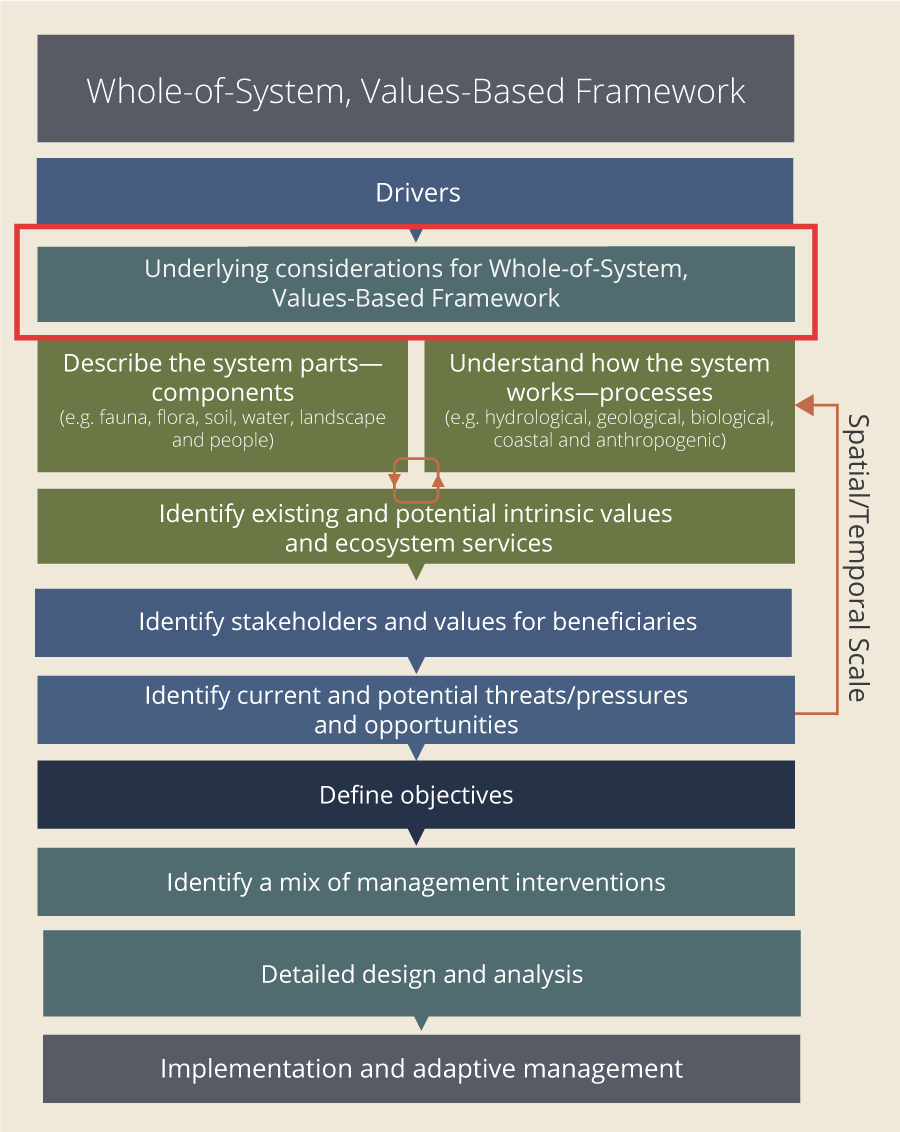|
|
Underlying considerations for Whole-of-System, Values-Based FrameworkThe Whole-of-System, Values-Based Framework (the Framework) is underpinned by:
Application of the Framework and these underlying considerations to the management of aquatic ecosystems enables the development of interventions that address multiple services and values to achieve the best outcomes for a system and encourage ‘wise-use’ of the system[1] (e.g. how can maximum benefits be achieved for the system, while minimising the impacts?) When implementing the Framework:
Each step of the Framework should be supported by data and assessments. A contemporary evidence base supported by detailed social and ecological assessments ensures that knowledge about the system is current so that appropriate and effective management interventions can be designed. The data used to inform the Framework does not need to be new and can involve the collation of existing reports and information. Data should be synthesised in a way that allows for it to be used again in the future and easily understandable by stakeholders (e.g. through processes such as Walking the Landscape and Catchment Stories). Assessments should involve beneficiaries and stakeholders to ensure they inform the development of holistic management interventions that incorporate multiple biophysical, social, cultural and economic values. Conducting assessments or using data from previous assessments that exclude beneficiaries who know the system may generate an incomplete story about what is happening within the system. The Framework forms the logic and underpins the Queensland Aquatic Ecosystem Rehabilitation Guidelines and Queensland River Rehabilitation Management Guideline. References
Last updated: 30 June 2022 This page should be cited as: Department of the Environment, Tourism, Science and Innovation, Queensland (2022) Underlying considerations for Whole-of-System, Values-Based Framework, WetlandInfo website, accessed 15 December 2025. Available at: https://wetlandinfo.detsi.qld.gov.au/wetlands/management/whole-system-values-framework/key-principles.html |

 — Department of the Environment, Tourism, Science and Innovation
— Department of the Environment, Tourism, Science and Innovation


